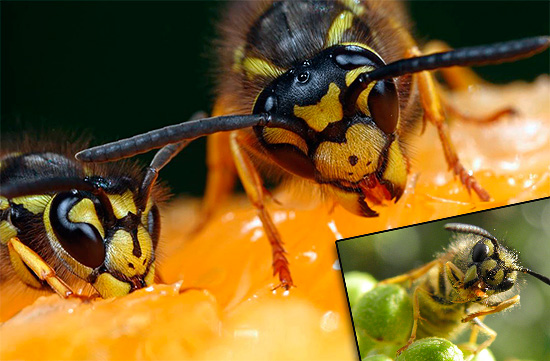
The food preferences of wasps are highly dependent on both their specific species and the developmental stage of the insect. For example, the most common and common paper wasps in their adult state are not able to digest solid food, and their larvae, on the contrary, just eat meat and relatively solid protein foods.
And although at first glance it may seem that wasps eat everything - from grapes to meat and salted fish - in reality, these insects are very picky eaters. A false impression of what wasps eat is due to the fact that it is adult insects that collect food - both for themselves and for the larvae.

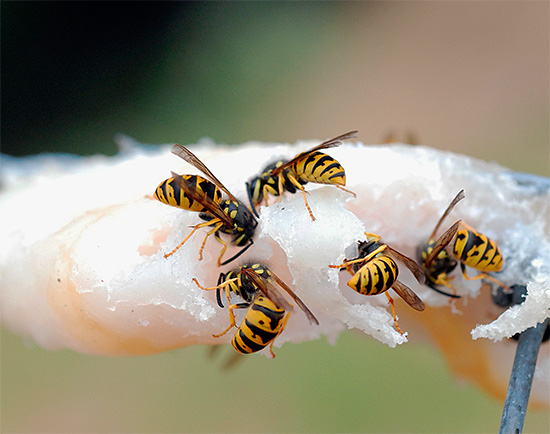
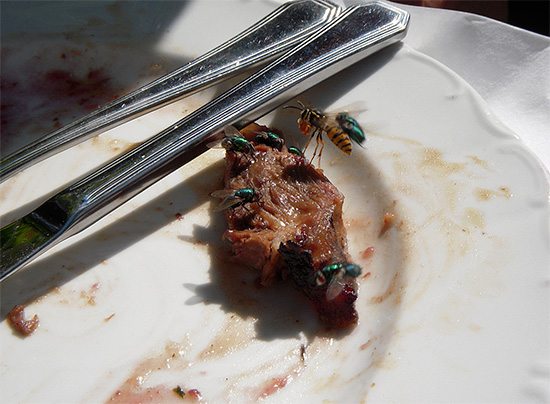
It is interesting
Strict separation of the diet in adult insects and their larvae is a very effective evolutionary adaptation to avoid competition for food between individuals of the same species at different stages of development. When a larva feeds on food that an adult insect is not able to consume, a situation cannot arise in which, due to the limited food resources, individuals at a certain stage simply die of starvation. This phenomenon is most pronounced in certain species of butterflies and mayflies: their adults are not able to eat at all.Conversely, insects that can consume a wide range of foods or live close to a food source do not have this distinction. These include, for example, cockroaches, locusts or bed bugs.
What Do Adult Wasps Really Eat?
So what do wasps really eat? The basis of the diet of adults is the juices of various berries and fruits. These foods are highly nutritious, readily available during the life of the working insects, and in certain seasons are truly abundant and do not require serious energy expenditure for consumption.
That is why wasps eat strawberries, grapes, raspberries, blackberries, plums. Summer residents usually notice that insects gnaw out exactly the soft parts of the fruit, while leaving the peel.
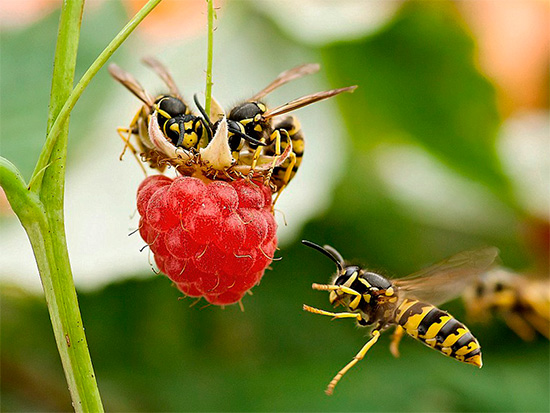
Somewhat less often, wasps eat apples or pears - these fruits are much harder, but being ripe, they are quite “teeth” for striped pests.
Summer residents in case of crop damage by these insects are recommended to make or buy special mesh bags and put them on apples or grapes to protect fruits from being eaten.
It is interesting
Wasps are extremely partial to fermented vegetable raw materials. They flock especially actively to fallen grapes or apricots, often making small holes in the skin of grapes, and after a few days they return and drink juice from places where the pulp has begun to ferment. Therefore, mash, beer and kvass are often used in wasp traps.
In addition to natural sweets, if possible, wasps eat various syrups, jams, just wet and damp sugar, and honey.

However, the diet of wasps is not limited to plant foods: their larvae are predators.Adult insects catch various insects for the younger generation, chew their soft tissues and transfer the resulting protein gruel to the larva. Such food allows the larvae to quickly gain weight and grow.
But even before transporting the prey, the wasp, having just caught the victim, gnaws through the integument of the body and licks the hemolymph - an analogue of blood in more highly developed animals. The hemolymph is rich in proteins and fully meets the needs of an adult wasp in these substances.
However, after the nurse delivers the “bloodless” victim to the larva and feeds it, she receives a nutritious “reward” in the form of saliva, which the larva itself secretes in large quantities. This is another food source for adult wasps called trophollaxis, the exchange of food between the larva and the adult.
Do wasps eat meat and fish?
What else do wasps eat? Sometimes it may seem that wasps eat meat, but this is not at all the case. Insects simply gnaw off pieces of it with their jaws and carry them to the larvae, chewing on the prey along the way. Thus, adult wasps do not eat meat, but give this food to their younger generation.
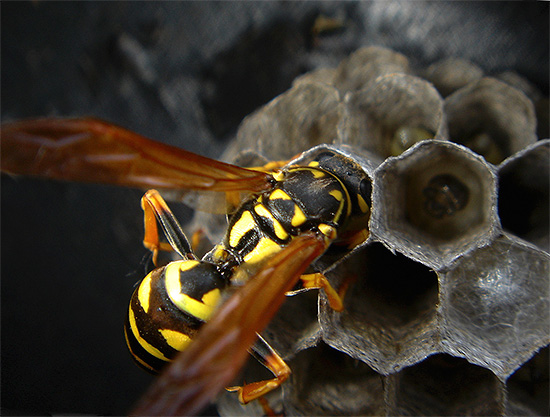
Carrion in nature, meat and fish in the markets turn out to be more affordable sources of food for striped winged predators - these products simply lie in the open, they do not need to be killed, sometimes risking their lives, and expend a lot of effort on this. Therefore, wasps are so numerous, for example, in the fish or meat rows in the markets. In addition, the remains of rodents and lizards were often found near the nests of hornets - insects find a dead animal and, without the slightest disgust, take it piece by piece to the nest.
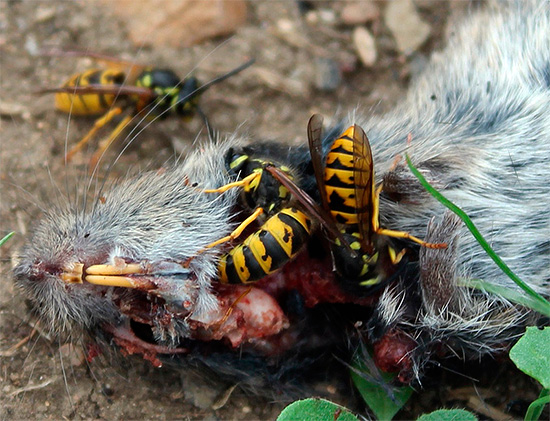
Speaking of hornets, it is worth noting that most of them have food preferences similar to those of smaller relatives. Indeed, by and large, all hornets are a separate genus of wasps, uniting some of the largest representatives of the entire suborder. Many hornets destroy the nests of bees, feed them and their larvae to their own brood, and they themselves enjoy honey with pleasure.
Some very large species of hornets can hunt small lizards that have just hatched from eggs or catch frogs that have undergone metamorphosis, but such cases are still extremely rare, and the meat of the victims themselves is used only as food for the larvae.
In some wasps, the situation with the division of food can go to extremes. For example, for the larvae of the bee wolf - philanthus - nectar is generally a toxic substance, and an adult has to squeeze it out of the esophagus of a caught bee and eat it on its own. And already the philant takes the bee to the mink, where the descendant will eat it.
Vegetarian wasps
There is also a group of wasps that even feed the larvae on vegetarian food. By the nature of their diet, these insects are somewhere in the middle between ordinary wasps, which feed the larvae with meat food, and bees, which prepare honey for their offspring. These are flower wasps. As adults, they themselves feed on plant nectar and prepare nectar for their larvae in nests.
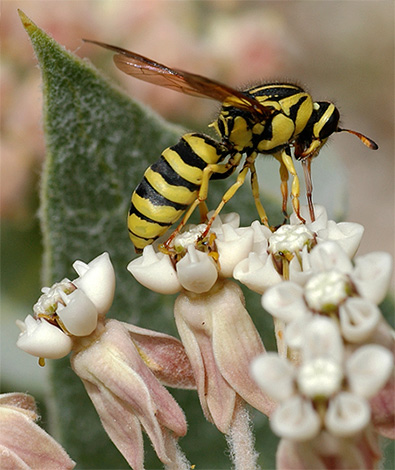
Interestingly, many types of flower wasps are similar to ordinary paper wasps, and an inexperienced observer can easily confuse them.
There is even a species of wasp, Brachygastra lecheguana, which is considered the only insect species other than bees that harvests and stores honey (Australian, African and Mexican honey ants do not count - they do not store honey, but simply store it in their bodies).
Unusual eating habits
However, this is not all: in nature, there are wasps with much more original food preferences. For example:
- Scolia are huge wasps (among them the largest wasp in the world, Megascolia procer), which feed on nectar as adults and lay their eggs on paralyzed beetle larvae. Their own larvae feed by eating the prey that is still alive but unable to move.

- Wasp wasps, the larvae of which parasitize the larvae of other solitary wasps.

- Road wasps, many species of which feed their offspring with spiders, including quite poisonous tarantulas.

- Solitary German wasps that penetrate the nests of social relatives and lay their eggs directly on the larvae of the same paper wasps.

In general, in the vast majority of wasps, adults feed mainly on plant foods, and larvae feed on animals: either parasitizing on victims or receiving food from adult insects.
An exception to this rule is either more primitive wasps, which feed on animal food at all stages, or, conversely, more evolutionarily developed ones, which themselves consume plant nectar and feed their larvae with it or with the products of its processing.
An interesting video: a clear example of the fact that wasps do not eat meat, but take it to the nest in pieces


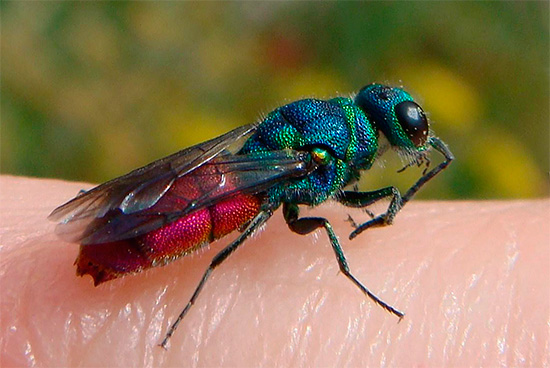



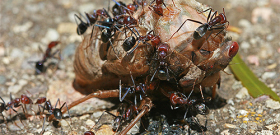

I love os! They are lovely. Feeding them is pure pleasure!
Entirely agree with you! A wasp has been working hard on my window for 5 days, gnawing the flesh out of half an apple and turning it into balls with a diameter of 1-1.5 mm. I just don’t know what to do with it, it’s a pity to intrude into the “process”, but watching the activity of the wasp is insanely interesting! She flies away at night, but returns at dawn to continue. Yesterday, another wasp flew to the remains of an apple (dried skin) to “scan” a plate with a pile of balls of pulp and a field of activity ... Today, the work of the wasp continues ...
I was stung by a wasp in the car, the bite is so sick, I killed her. I give advice: throw out the corpse of a wasp or hornet. If you don’t throw it out, in 2 hours a nest of wasps or hornets will fly in and you will be trynda. I don't like os.
I read the entire article without rewinding, as it is really interesting and not boring at all. Thanks to the authors for such a site!
Lots of useful information, thanks for reading.
I love os, I don't know why.They are very beautiful!
The wasp is a terrible and harmful insect, it causes great harm to grapes, pears, plus it can sting. Aggressive before wintering.
Cool